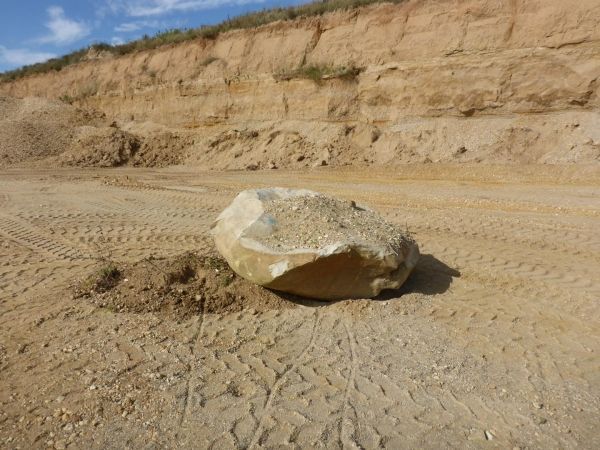The timing of the Middle Pleistocene glacial-interglacial cycles and the feedback mechanisms between climatic shifts and earth-surface processes are still poorly understood. This is largely due to the fact that chronological data of sediment archives representing periglacial, but also potentially warmer climate periods, are very sparse until now.
“The Quaternary sediments in central Germany are perfect archives to understand the climate shifts that occurred in the region during the last 450,000 years”, says co-author Tobias Lauer, a geochronologist at the Max Planck Institute for Evolutionary Anthropology. “This is because all sediments representing the ice advances and retreats of Scandinavian glaciers into Europe are preserved here.” The sediments in the region, and especially in the area around the city Leipzig, are extremely well documented due to tens of thousands of drillings over the past few decades and open pits related to brown-coal mining.
Especially relevant are the river deposits of local rivers like the Weisse Elster and the Saale, which are preserved between the moraines of the so-called “Elsterian” and “Saalian” ice advances. “Especially the timing of the first major glaciation has been highly debated within the scientific community during the last few decades", says Lauer. "By dating the river deposits systematically we found that the first ice coverage of central Germany during the Elsterian glaciation (named after the river Elster) occurred during marine isotope stage 12, likely about 450,000 years ago, which is 100,000 years earlier than previously thought.” To obtain these dates the researchers used luminescence dating, a technology that determines how long ago mineral grains were last exposed to sunlight or heat.
Read more at Max Planck Institute for Evolutionary Anthropology
Image: This boulder in the gravel pit Rehbach in Saxony, Germany, was transported from Scandinavia by glaciers 450,000 years ago. (Credit: MPI f. Evolutionary Anthropology)


